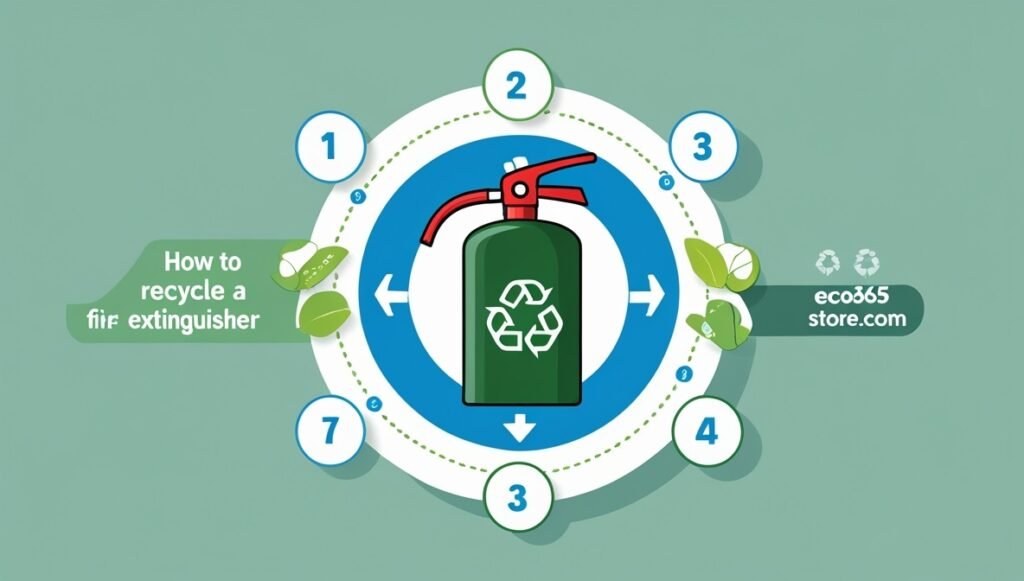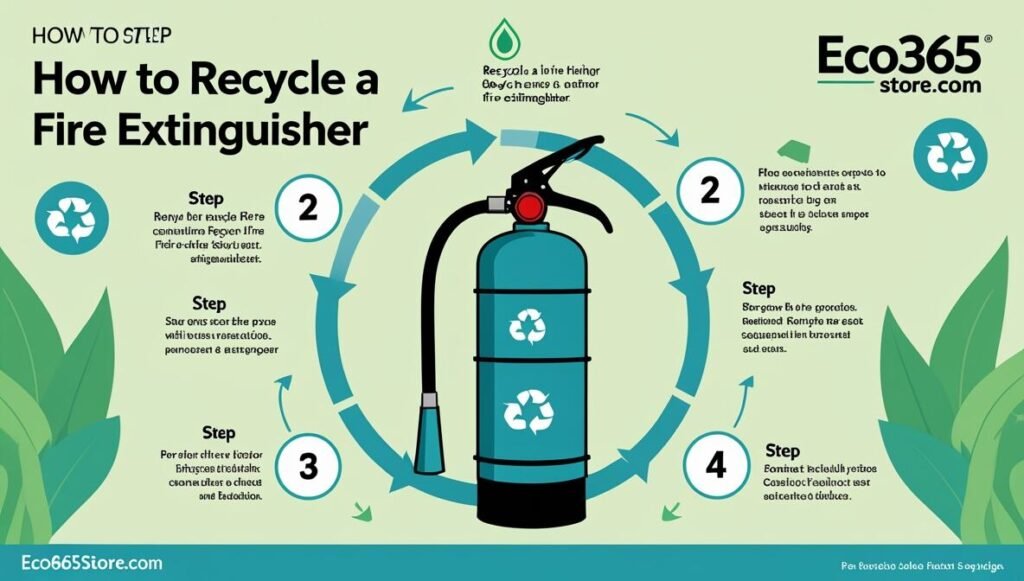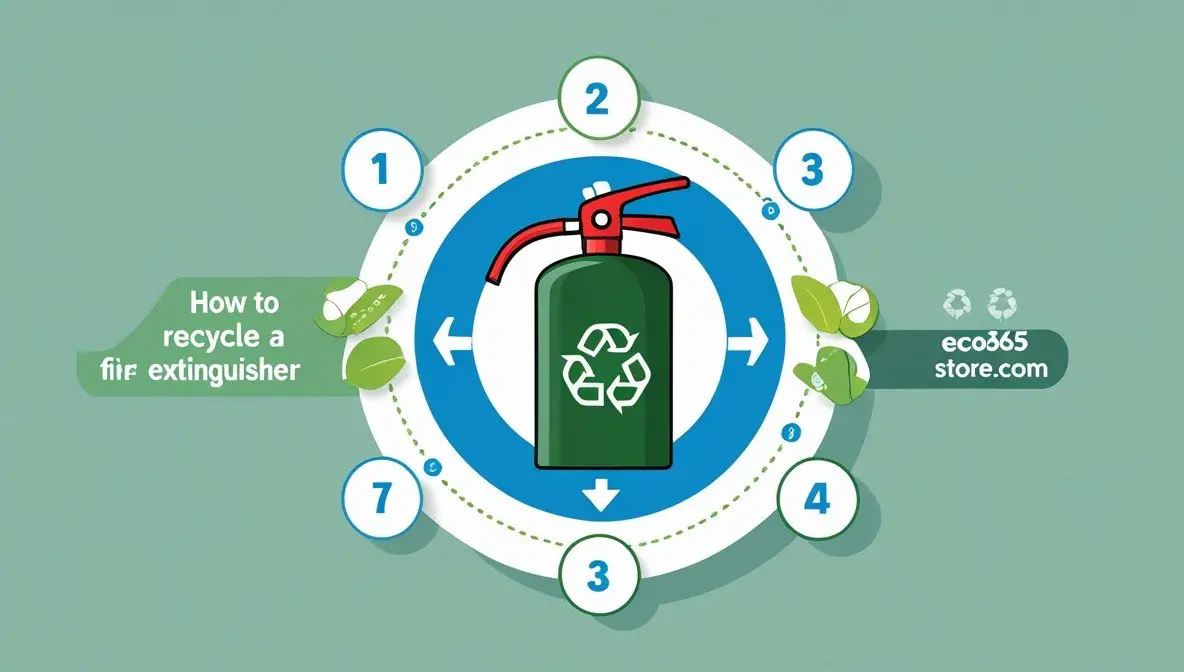Did you know that fire extinguishers contain valuable materials that can be recycled, but many still end up in landfills? Improper disposal can harm the environment, as these devices often include chemicals and pressurized components that require special handling.
This article will explain how to recycle a fire extinguisher responsibly, ensuring it doesn’t end up in the trash or garbage. Recycling fire extinguishers helps conserve resources like metal and prevents harmful chemicals from polluting the environment. By following proper waste disposal methods, you can make a positive impact while keeping your home or workplace safe. Let’s explore the best ways to handle old or used fire extinguishers!

Why Recycle Fire Extinguishers?
Recycling old fire extinguishers is not just a matter of convenience; it’s essential for protecting the environment and conserving resources. Here’s why recycling your extinguisher matters:
1. Environmental Impact
- Hazardous Waste: When improperly discarded, fire extinguishers can release harmful chemicals into the environment. The contents may leak, contaminating soil and water, especially if the extinguisher is empty but still contains residual chemicals.
- Landfill Space: Fire extinguishers are bulky and take up unnecessary space in landfills, where their metal components and chemicals can remain for years.
- Recycling Prevents Harm: Proper recycling ensures that hazardous materials are handled safely and prevents potential environmental contamination.
2. Resource Conservation
- Valuable Metals: Fire extinguishers are typically made of steel or aluminum, materials that can be recycled and repurposed.
- New Products from Old Materials: The recycled metals from an old fire extinguisher can be used to create new products, such as construction materials, tools, or even new extinguishers. Recycling reduces the need for raw material extraction, saving energy and resources.
Preparing a Fire Extinguisher for Recycling
Before recycling your old fire extinguisher, it’s important to prepare it properly to ensure safety and compliance with recycling guidelines. Follow these steps:
1. Safety First
- Discharge the Extinguisher: If the extinguisher has been partially used, release any remaining contents in a safe, open, and well-ventilated area. Follow the manufacturer’s instructions to avoid any accidents.
- Release Pressure: Even if the extinguisher hasn’t been used, it may still be pressurized. Carefully release any residual pressure to make the unit safe for handling and recycling. Check the gauge to confirm the pressure is fully released.
2. Remove Components
- Separate Removable Parts: Detach components like the hose, nozzle, and gauge, if possible. These parts may need to be recycled separately, depending on the materials used.
- Follow Local Guidelines: Some recycling programs require the separation of certain parts, so confirm specific requirements with your chosen facility.

How To Recycle A Fire Extinguisher?
Recycling your fire extinguisher responsibly ensures environmental protection and resource conservation. Here are several options to properly dispose of fire extinguishers:
1. Local Fire Departments
- Contact Your Local Fire Department: Many fire departments offer programs to collect and recycle types of fire extinguishers safely.
- Proper Disposal Guidance: Fire departments often provide advice on how to prepare your extinguisher for recycling or when it’s time to replace a fire extinguisher.
2. Hazardous Waste Disposal Facilities
- Find Local Facilities: Locate a nearby household hazardous waste disposal site that accepts extinguishers.
- Check for Acceptance: Confirm with the facility that they accept extinguishers and that your unit has been discharged and depressurized, with the pressure gauge reading zero.
3. Metal Recycling Centers
- Locate Centers: Many metal recycling centers accept extinguishers as long as they are properly prepared.
- Confirm Guidelines: Ensure that the extinguisher has been discharged and all removable components, like the nozzle and gauge, are detached. Metal centers often recycle the canister for its valuable steel or aluminum.
Avoid Regular Trash Disposal
- Do Not Use Regular Trash: Fire extinguishers are pressurized and can pose a hazard if disposed of with regular trash. Proper recycling ensures safe handling and reduces environmental risks.
Conclusion: Responsible Recycling of Fire Extinguishers
Learning how to recycle a fire extinguisher is a vital step in protecting the environment and conserving resources. Proper disposal prevents hazardous materials from harming the soil, water, and air while ensuring valuable metals are repurposed into new products.
Whether you choose to work with a local fire department, hazardous waste facility, or metal recycling center, it’s crucial to follow the necessary preparation steps, like discharging and disassembling the unit. By taking these actions, you’re not only ensuring safe disposal but also contributing to a cleaner, more sustainable planet.
Make the responsible choice today and recycle your fire extinguisher safely and effectively.

Anamika is a passionate writer for Eco365Store.com, specializing in topics that inspire a cleaner, greener world. With expertise in home cleaning, recycling, and eco-friendly solutions, she crafts engaging and informative articles that help readers adopt sustainable practices in their daily lives.

